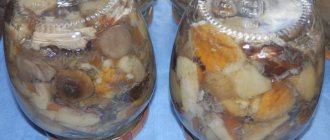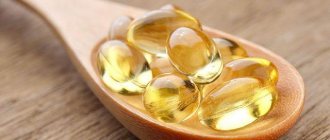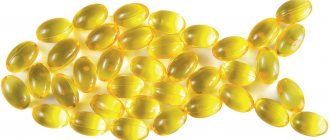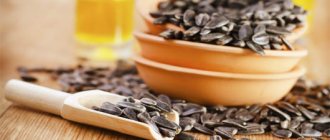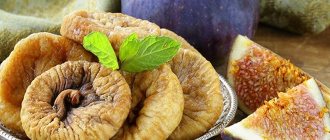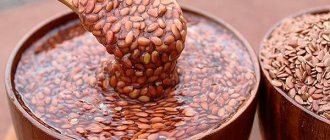Why wild mushrooms are useful for humans - secrets of use
There are many varieties of forest or wild edible mushrooms.
These living organisms themselves combine the characteristics of plants and animals, and their main function is the destruction and transformation (mineralization) of a large mass of organic substances, which annually accumulates in large quantities on our planet as a result of the vital activity of higher and lower photosynthetic plants.
Fungi are a kingdom of living nature that unites eukaryotic organisms that combine some of the characteristics of both plants and animals. Wikipedia
The mushroom kingdom is about 100 thousand species of living organisms.
Some of them are currently successfully used in medicine, as having medicinal properties, for the treatment of a number of diseases (fungotherapy), as well as for the production of antibiotics, vitamins, etc.
But edible forest mushrooms are among the traditional delicacies of Russian cuisine.
Prevention of mushroom poisoning
Eating even an edible mushroom can be dangerous, so you need to follow some rules when collecting these gifts of the forest:
• Take only young, beautiful mushrooms that are not eaten by worms.
• Collect them from ecologically clean forests.
• Be sure to wash and boil the mushrooms several times before eating.
• Do not salt or marinate them in galvanized containers.
• Some types of mushrooms (conditionally edible) need to be soaked for several hours before cooking.
Dishes prepared from these forest gifts are not recommended:
• Children under 8 years old.
• Nursing mothers and pregnant women.
• People with gastrointestinal diseases.
Main edible forest mushrooms
All representatives of the mushroom kingdom growing on the territory of the Russian Federation can be divided into inedible, edible, poisonous and conditionally edible.
Edible varieties have a pleasant aroma, exquisite taste and are a real decoration for both festive and everyday tables.
Edible forest mushrooms, the fruiting bodies of which do not have a repulsive odor and also do not contain bitterness and toxic compounds, include:
- white, Polish, chestnut and oak;
- saffron milk caps, goats, chanterelles and boletuses;
- boletus and field champignons;
- blackened podgruzdok and green russula;
- true autumn honey fungus and summer honey fungus;
- tricholoma violet and common boletus, etc.
In general, representatives of the mushroom kingdom that can be eaten have a rich chemical composition and differ in rich taste, depending on the type of culinary processing, as well as maturity (young ones are much more nutritious than old ones).
Chemical composition, beneficial and harmful properties of mushrooms
The composition of mushrooms depends on the place in which they grew. The beneficial components of different types vary depending on the composition of the soil, weather conditions, and age. Young mushrooms contain the most useful substances. It is not recommended to eat old specimens, since as they grow they can accumulate large amounts of toxic substances.
A significant part of the body of mushrooms consists of water. Therefore, they are greatly reduced in size during heat treatment.
Chemical indicators of mushrooms
| Name of the mushroom | Proteins 100g/g | Fats 100g/g | Carbohydrates 100g/g | Vitamins | Macro- and microelements |
| Champignon | 4,3 | 1 | 0,1 | B1, B2, B6, B9, C, E, PP, choline, carotene | Co, Zn, Na, Mg, Mn, Ca, Fe |
| Chanterelles | 1,5 | 1 | 1 | A, B1, PP, C, E, D, B9, B2, B6, B5 | K, S, Cu, Fe, Ca, F, Mg, P, Na, Zn, Mn |
| Oyster mushrooms | 3,3 | 0,4 | 6,4 | B1, B5, B2, B9, B6, B12, C, PP, D, E | Cr, S, Cd, K, Mo, P, Br, Si, Na |
| Chaga | 2,1 | 0,8 | 1,2 | D, B1, B3, B2 | K, Zn, Br, Mn, Cu, Si, Fe, Co |
| Tea mushroom | 2,6 | 7,2 | C, A, E, B1, B2, B6, B12, PP, D | Zn, Ca, Mg | |
| Milk mushroom | 3 | 4,2 | A, B1, B2, B12, D, PP | Ca, Fe, Zn, I | |
| White | 3,7 | 1,7 | 1,1 | B1, B2, B5, B6, B9, C, D, E | K, Ca, Si, Mg, Al, Na, Cl, P |
| Honey mushrooms | 2,2 | 1,2 | 0,5 | B1, B2, B5, D, E, C, PP, B6, B9 | K, Ca, Si, Mg, S, Cl, P, Na, Al, Br, I |
| Shiitake | 2,2 | 0,5 | 6,8 | A, B1, B3, B2, B5, B6, C, D, K, E | K, Ca, Se, Zn, Mg, Na, P, Fe |
| boletus | 2,1 | 0,8 | 1,2 | C, E, PP, D, B1, B2 | Mg, Fe, K, Ca, Mn, P, Na |
| Russula | 1,7 | 0,7 | 1,5 | E, C, PP, B1, B2 | K, Na, Mg, Ca, P |
| Boletus | 3,3 | 0,5 | 1,2 | C, E, PP, B1, B2 | Na, Fe, K, P, Ca, Mg |
| Name of the mushroom | Acids | Calorie content (in fresh mushrooms) 100g/kcal | |||
| Champignon | linoleic, oleic, palmitic acids, Omega-6 | 27 | |||
| Chanterelles | nicotinic, myristic, folic, pantothenic acid, Omega-6 | 19 | |||
| Oyster mushrooms | pantothenic, nicotinic, folic, Omega-6, Omega-9, Omega-3, Omega-11 | 33 | |||
| Chaga | vanillin, oxalic, oil, formic, vinegar | 20 | |||
| Tea mushroom | vinegar, apple, lemon, oxalic, grape, milk | 28 | |||
| Milk mushroom | nicotine, folic | 43 | |||
| White | Omega-6, caprylic, lauric, Omega-3, palmitic, behenic, Omega-11, Omega-9, Omega-5 | 34 | |||
| Honey mushrooms | Omega-3, Omega-6, Omega-11, Omega-9, Omega-7, caprylic, stearic, arachidic | 17 | |||
| Shiitake | aspartic, glutamic, stearic, capric, Omega-6, Omega-3, Omega-9 | 34 | |||
| boletus | Omega-6, Omega-9, myristic, palmitic, linoleic | 20 | |||
| Russula | Omega-6, Omega-9, stearic, myristic, linolenic | 15 | |||
| Boletus | linolenic, stearic, myristic, Omega-9 | 22 | |||
What are the benefits of mushrooms - calorie content, nutritional value, chemical composition
What are the benefits of the most famous mushrooms in Russian cuisine?
For humans, edible forest mushrooms are a storehouse of protein and important microelements, as well as basic nutrients - moisture, carbohydrates and lipids, since their fruiting bodies contain such important compounds as:
- Fatty acids (2-8%) – palmitic, stearic, linoleic, oleic.
- Amino acids – 25-40%.
- Minerals (7.7-11.5%) – zinc (in very large quantities!!!), potassium, phosphorus, copper.
- A significant amount of vitamins. The human body constantly needs these compounds, and edible mushrooms are rich in vitamins A, B1, B3, C, PP, D, etc.
- Complex carbohydrates - glycogen, mycodextrin, mycoinulin, etc.
- Fiber and chitin, which are not broken down by gastric juice, but stimulate intestinal motility.
- Extractives that stimulate the secretion of digestive juices and lecithin.
The amount of nutrients and caloric content contained in mushrooms varies depending on the age, part of the fruiting body and processing method.
For example, the average energy value of fresh mushroom raw materials is from 30 to 35 calories per 100 g, dried - from 220 to 250 calories per 100 g, moisture in raw raw materials can be 88-92%, and in dried raw materials - 2-6%, the amount of proteins in fresh fruiting bodies is 2-5%, and in dried ones – up to 23%.
What is healthier: the cap or the stem of a mushroom?
This question and more are answered very well in this video; be sure to watch it and you will learn even more about the benefits of wild mushrooms!
Deadly mushrooms: poisons and toxins in mushrooms
Deadly mushrooms contain toxic substances, but despite this, they are called conditionally edible. For example, the toxin gyrotomine from the common string is completely removed with careful heat treatment. If the mushrooms are not boiled in boiling water with several changes of water, then this toxin will disrupt the natural metabolism of amino acids and block the action of vitamin B6, which is vital for humans.
Neurotoxins are a class of mushroom poisons that, as a rule, do not kill, but cause a lot of harm. When they enter the human body, they disrupt the transmission of any nerve impulses. Poisoning is accompanied by vomiting, nausea, fever, excessive salivation, headache and weakness. In some cases, visual hallucinations and unpleasant tinnitus may occur. Often, even after the end of treatment, there may be consequences of poisoning that are difficult to cope with.
Fly agaric and Patouillard fiber contain such a dangerous toxin as muscarine, which causes the development of mycoatropine syndrome. But if everyone knows the fly agaric, then Patouillard fiber is easily confused with russula. Its main difference is the protruding hump in the center of the cap. Fiber poisoning begins with slight disturbances in visual abilities and increased salivation, then diarrhea and vomiting are added, and blood pressure increases. Many mushrooms contain enzymes that can be digested by a healthy body. However, if a person has any problems with the intestines or pancreas, then it is not worth taking risks and trying these types of mushrooms (for example, pig mushrooms).
Brief description of each forest mushroom
The main properties of the most popular representatives of the mushroom kingdom are:
- The butterdish has a sticky chestnut or yellow-brown cap and a whitish stem; in its raw form contains 0.026 mg of vitamin C, nitrogen - 2.99-4.31%.
- The chanterelle is distinguished by a yellow, smooth, asymmetrical, concave or watering can-like cap, as well as narrow folded plates; in its raw form it contains 0.067 mg of vitamin C, 0.108 mg of vitamin PP, protein substances - 2.64%.
An interesting fact is that chanterelles are never wormy, due to the fact that they contain chitinmannose, a substance that helminths of all types cannot tolerate.
- Saffron milk caps have a fleshy, concave, bare and sticky, gray-orange-red cap with concentric circles; when salted they contain 21.85 g of protein, when pickled - 22.4 g of protein.
- Milk mushrooms are distinguished by a thick, dense, concavely spread whitish cap with plates of the same color; when salted they contain 11.0 g of protein.
- The honey fungus is distinguished by a brown-yellow, yellow-gray-brown or reddish-brown semicircular or flat cap with a hump in the middle. Its stem is dense and lighter than the cap. In its raw form it contains 2.27% protein, 0.035 mg of vitamin C.
- The boletus cap is dry, bare, dark red or orange-red, and the leg is whitish and dense. In dried form it contains 20.25% protein, 0.031 mg of vitamin C, 0.95 mg of vitamin PP.
- The boletus cap is bare, dry, gray-brown in color, the stem is dense and whitish. In dried form it contains 25.5% protein compounds, 0.009 mg of vitamin C, 0.65 mg of vitamin PP.
The taste and benefits of eating mushroom dishes largely depend on the age of the fruiting bodies and the cooking method.
Is it possible to eat mushrooms while losing weight and what is the best way to cook mushrooms?
It should be noted that many wild forest representatives of the mushroom kingdom have long been used for preparing various dishes and homemade preparations.
Mushrooms in general are considered an additional source of complete protein, which is 70% digestible.
Moreover, for better protein absorption, the fruiting bodies should be boiled and fried.
When losing weight, to fully provide the body with proteins, on the recommendation of a nutritionist, it is possible to include dietary mushroom dishes in the daily menu.
What is the best way to prepare mushrooms - drying (description of method)
Drying is the most practical and simplest type of processing of mushroom raw materials.
Dried mushrooms are tastier and have more nutritional value than salted or pickled mushrooms.
The tubular species that lend themselves best to drying are aspen boletus, moss boletus, boletus and boletus.
In addition, you can also dry morels, chanterelles or honey mushrooms.
Drying is carried out using the following method:
- Fruiting bodies that are free from mold and wormholes, young and healthy, should be selected. Next, you need to clean them of leaves, sand, and pine needles.
- The legs must be trimmed, leaving 2-3 cm from the cap. Legs that are too hard should be removed completely, and large caps should be cut into several pieces. Morels are dried completely.
- The first stage of drying is drying at +40+50°C for 2-3 hours, the second stage is drying at +60+70°C.
- At home, the raw materials can be dried using an oven, Russian oven or in the sun.
As a result of proper drying, food products are obtained that have an elastic consistency and high nutritional value.
How to pickle wild mushrooms - video
Types of poisonous mushrooms
Experienced mushroom pickers can identify them from afar. All poisonous mushrooms are divided into three types:
• Causing food poisoning. These include cobweb, whitish talker, May row, fiber grass, mycena, galerina, some types of russula, false puffball, curly collibia, and butterflower. In case of poisoning with these mushrooms, the first signs can be detected within an hour, and complete recovery occurs only on the third or fourth day.
• Leading to disruption of the central nervous system. This is the panther fly agaric, the red fly agaric, and some rowers. Symptoms appear two hours after consumption. Timely medical care leads to a complete recovery.
• Deadly. This group includes the pale toadstool, gray-yellow honey fungus, stinking fly agaric, and spring fly agaric. These are the most dangerous mushrooms in our forests. The poison contained in them enters the human kidneys and liver. The toxic effect, leading to irreversible consequences, appears only after two days.
There is another type of mushroom called conditionally edible. In such mushrooms, the poison is completely removed through careful and repeated heat treatment.
Contraindications to the use of wild mushrooms
It should be noted that for some diseases, the inclusion of mushroom dishes in the diet is contraindicated. Such diseases include:
- metabolic diseases (gout, etc.);
- disruption of the liver and kidneys;
- gastrointestinal diseases.
To summarize, we can conclude that edible representatives of the mushroom kingdom are a specific food product that has a number of unique properties, in particular, a high content of plant protein and a microelement such as zinc.
However, mushrooms should be eaten in the absence of contraindications and only as an additional source of protein, for example, during fasting.
Be healthy!
boletus
They contain a supply of well-balanced protein and vitamins B, C, PP, E. They are rich in dietary fiber, thanks to which they saturate well and remove toxins from the body. They have antioxidant properties and help normalize blood sugar levels.
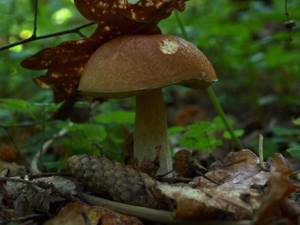
Boletus mushrooms do not accumulate toxins, therefore they are among the safest mushrooms (Photo: Pixabay.com)
In 2020, boletus mushrooms, along with chanterelles and milk mushrooms, were included by Finnish scientists in the list of the safest mushrooms. They do not accumulate toxins and heavy metal salts, so they can be consumed regularly without the risk of poisoning.
The most dangerous from the point of view of the accumulation of toxins are wild champignons. They may contain high concentrations of silver, mercury and cadmium. Porcini and boletus mushrooms also absorb heavy metals. In the first, an excess of toxic silver is detected, in the second - iron. These mushrooms should be consumed carefully, no more than 300 grams per week.


